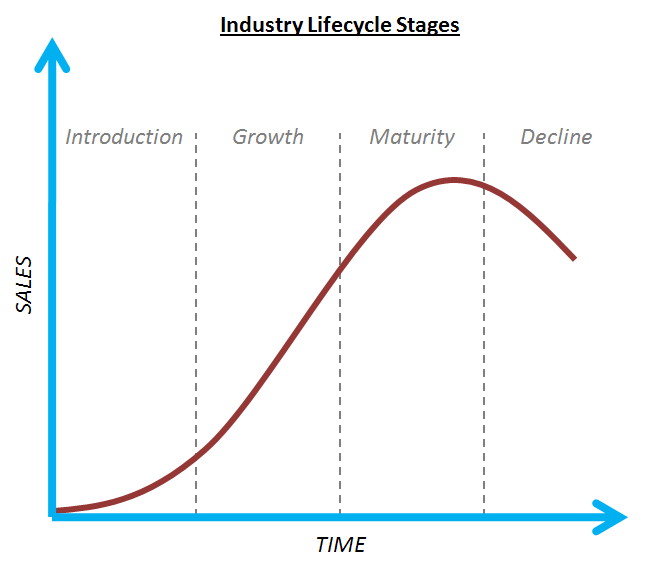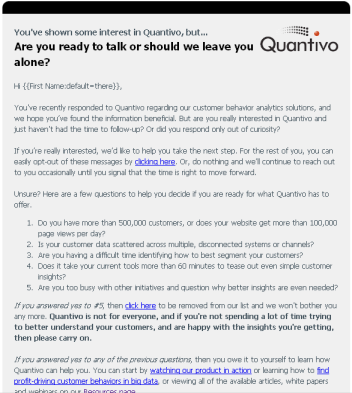OK, so WFH isn’t even a word (it’s three: Â working from home), let alone a bad word. Â So why do so many employers, managers, and coworkers treat it as such? Â In today’s constantly-on, mobile-enabled, Skype video-connected world, there are very few reasons why an office employee needs to actually be in the office to be productive. Â Sure, there are people who need to be away from home to work due to personality, logistical, or other issues – such as those with young children at home and no space for an office. Â However, it’s confusing to me that so many people think that, just because someone is working from home, they are slacking off and otherwise unproductive.

A recent manager told me that working from home wasn’t allowed under his management because “work happens in the office.” Â Really? Â In just a few weeks at that job, I saw that work didn’t really happen all that often in the office. Â In a typical workday, the open floor plan encouraged plenty of random conversations that ranged from work to television to lunch destinations. Â Add in the walk to the cafe in the lobby, a drive to a local lunch spot, and a half-dozen non-work-related conversations every day and that eight-hour workday drops down to about five, maybe less.
Contrast that with working from home, where you’re alone (ideally) and totally free from the distractions of coworkers. Â A place where you can choose to engage in an email, phone, or IM conversation immediately or later, when you have time and focus. Â A place where you’re free to work in total silence, or with the heavy metal music turned up to 11. Â A place where you have the freedom to structure your office, your day, and your view. You get the point.
Going further, the eight-hour workday (or 10-12 in the start-up world) is actually extended by an hour or more on each end. Given a typical commute of 30-60 minutes, breakfast, getting dressed, etc., you’re looking at an additional few hours per day that are totally unproductive with respect to your employer’s point of view, but which and employee considers part of the work day.
Again, contrast that with working from home where the average commute is 15-30 seconds, breakfast is often multi-tasked with checking email and attending a conference call, snacks and lunch are just a few feet away (and close to free), and showering is, unfortunately for spouses, optional.
In fact, I’m a firm believer that those who work from home actually put in MORE hours than those who go into the office. Once you subtract the lunches, coffee stops, mindless office chit-chat, etc., from the work day, the typical office worker is probably putting in about a 60% workday. Â When working from home, your line between home and work becomes blurred. Â You end up working later than you expect because you don’t have the end-of-day cues of the office emptying out. Â You aren’t pressed to immediately shower, groom, and dress, so tend to get wrapped up in email or early tasks before you do anything else. You tend to work through lunch, and work longer knowing that your commute home is instantaneous.
Now, I can hear you saying, “What about those WFH-ers who go to the dry cleaners at 2pm or dial into a conference call from the mall? Â Really? Â You’re going to forget about the 70-minute lunch you took last week – while at work – because you had to get your oil changed and grab paper towels from Target?

Notice that, in this entire rant, I never mentioned that laptops are portable, smart phones allow access to email, IM, and documents and attachments from virtually anywhere.  I’ve worked effectively the past 10+ workdays from a new apartment with no internet access, surviving by tethering to my mobile phone to grab email, make calls, and even conduct a web meeting which shared my screen for a product demo of a browser-based product and used VoIP for the voice portion! (Thank you, GoToMeeting and my Nexus One phone on AT&T!)  There is absolutely no reason why I needed to go into an office to do any of this.
Now, don’t get me wrong, a productive brainstorming session in front of a white board can be more illuminating and effective that 20 conference calls, but they don’t happen every day and they aren’t necessary every day.  In fact, the occasional video chat can alleviate that sense of alienation and increase the sense of team.  And, as the guys at 37Signals put so well, time apart actually increases the effectiveness of occasional in-person meetings.  Absence makes the brainstorming grow fonder, or something like that…
So, after all of that rant, here are my five tips for making the work-from-home experience better for your employees:
- Don’t just support WFH, encourage it! Set the example by working from home and proving your productivity. Encourage communication and be responsive. Pick up the phone when an email response requires more than a paragraph. What not to do? I had a manager at Siebel Systems who frequently worked from home on Fridays. Â On those days, we either never heard from him, or when we did, he was obviously out shopping or running errands and was just calling to “check in.” Â If a question was asked that needed research, he always promised to get back to us later that day, but never did. Â That manager set the example that WFH was a vacation day and our team resented it.
- Support the necessary tools without breaking the bank. And, forget about where your employees work, but make it easy for them to do so.  Give all employees a laptop (not a desktop), a web meeting account (Yugma and Skype are both free, and Skype includes nearly ubiquitous audio/video chat, IM, and screen sharing), and access to a collaboration or project workspace like Basecamp or Google Docs. Reimburse $75 or $100 for mobile phone service so that your team isn’t worried about exceeding minutes or using the data plan.  Every tool required is available, and most can be found for free or nearly free.
- Don’t force video calls. While the iPhone’s new FaceTime video chat is all the rage, not everyone is comfortable showing their home office (or their WFH fashion) to the entire team. Â Even for those on the road, most wouldn’t choose to do a video conference from their hotel room. Â Audio-only phone calls have worked just fine for the past 50 years.
- Allow flexibility with schedules and meetings. In an office, you don’t expect people to be at their desk every second of the day, so WFH should be no different. Â I frequently run into the issue that everyone expects me to be attached to my phone and laptop 100% of the time. Â They assume that I don’t go out to lunch, don’t have other calls, and don’t even go to the bathroom. Â My guess is that people in the office immediately assume that WFHers are not working if they don’t answer the phone on the first ring or respond to an IM within seconds. Â Remember that breaks are needed regardless of work location, and that other calls or meetings or tasks pop up. Â More importantly, having the luxury to ignore the constant interruptions is one of the key benefits of WFH.
- Treat the remote colleague as you would anyone else. Expect the same output as those in the office, but give the same respect. Â One of my pet peeves is when a colleague (or worse, a manager) begins a conference call with something like, “So Bob, must be nice working from home today…” You wouldn’t begin a call with a customer or prospect that way; it’s insulting to the WFHer and counter-productive for those in the office.
Bottom Line:  Working from home may not be a personal preference for everyone, but for many it’s a highly-rewarding productivity and morale booster with a huge ROI.  Encourage it, support it, and quell the dissent from the non-believers.  In the tech start-up world, the typical workday has always been 10-12 hours long, with most people answering emails and putting in a few hours in the evenings and over the weekend.  If you’re willing to accept that “extra” work, there’s no reason to deny your team a few days per week for WFH.
Let me know what you think.
UPDATE: Â GigaOm’s WebWorkerDaily just had an interesting piece on the productivity gains from working at home. Â The most striking stat is that 45% of at-home workers put in 2-3 more hours per day, and 25% put in 4 more hours per day! Â Adding 20-50% more hours is an incredible benefit for any company.






